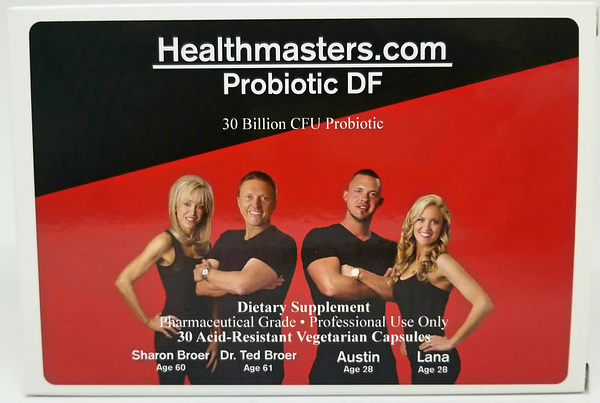Probiotic DF
Description
| Amount Per Serving | % Daily Value | |
|---|---|---|
|
Proprietary Blend
Lactobacillus acidophilus La-14 Bifidobacterium longum Bl-05 Lactobacillus plantarum Lp-115 |
174 mg (15 Billion CFU†) | ** |
|
HOWARU® Bifido (Bifidobacterium lactis HN019)
|
50 mg (15 Billion CFU†) | ** |
----------------------------
This is a replacement product for our Probiotic Blend, which is no longer available. This formula has 30 billion CFUs versus the Blend which had 4 billion CFUs.
🌟 Unlock the Power of Perfect Gut Health with Probiotic DF! 🌟
Are you ready to take control of your digestive health and feel amazing from the inside out? Meet Probiotic DF, the ultimate 30 billion CFU powerhouse designed to transform your gut and boost your health! 🔥
Why Probiotic DF is Your New Gut Health Hero 💥
💪 Supports a Healthy Gut Microbiome
Your gut is the foundation of your overall health, and with Probiotic DF, you’re giving it the ultimate boost! This vegetarian, dairy- and gluten-free formula is packed with 30 billion CFUs per capsule, featuring four powerful probiotic strains that are scientifically backed for maximum results. 🌱
🌟 Improves Digestive Health and Bowel Regularity
Tired of digestive discomfort or irregularity? Probiotic DF works wonders by promoting optimal bowel function, lactose digestion, and gut balance, so you feel your best every day! No more bloating, constipation, or digestive issues—just smooth, effortless digestion. 🌿
🛡️ Boosts Your Immune System
Your gut and your immune system are intricately linked—and with Probiotic DF, you’ll be giving your immune system the support it needs to stay strong and ready for anything! 🦠💪
The Power of 4 Research-Backed Strains 🔬
-
HOWARU™ Bifidobacterium lactis HN019: This incredible strain has been extensively studied and shown to improve gut transit time, support healthy GI function, and boost iron levels in children. Plus, it’s proven to increase beneficial gut bacteria in adults! 🧠✨
-
Lactobacillus acidophilus La-14: A superstar for gut health and immune function, this strain has a history of safe human consumption and is excellent at adhering to your intestinal lining to support a healthy gut environment. 🌱💪
-
Lactobacillus plantarum Lp-115: Found in fermented foods like sauerkraut, this strain is highly resistant to stomach acid and bile, ensuring it reaches your gut intact, where it can work its magic. 🥬⚡
-
Bifidobacterium longum Bl-05: This resilient strain is perfectly suited to the intestinal environment, supporting both digestion and gut health with proven safety and efficacy. 🏅🌿
Maximum Potency & Stability for Results You Can Feel! 🌟
✅ Acid-Resistant Veggie Capsules
Each capsule is gastro-resistant, thanks to innovative DRcaps™, ensuring that the powerful probiotics survive stomach acid and are delivered right where they’re needed—in your small intestines! 🌱💥
✅ Nitrogen-Purged Aluminum Blister Packs
We protect every capsule with cutting-edge packaging to preserve potency and prevent damage from heat, moisture, and oxygen, ensuring you get the freshest, most effective probiotics with every dose. 🔒✨
Why Wait? Start Feeling Your Best Today! 🚀
Don’t settle for anything less than the best! With Probiotic DF, you’re giving your gut and your immune system the support they deserve. Whether you want to feel energized, boost digestion, or simply experience the magic of a happy gut, Probiotic DF is the game-changer you’ve been looking for! 🎯💚
💥 Order Now and take the first step toward vibrant gut health and unstoppable energy! 💥
Opps
Sorry, it looks like some products are not available in selected quantity.



